Nick Lowe: Christmas At The Airport
[purchase]
I’m sort of doctrinaire about the creeping expansion of holidays. I’ve accepted President’s Day in lieu of Lincoln and Washington’s Birthdays but reject the concept of “Presidents’ Month,” which seems to be the creation of car companies. Seeing Halloween candy in the stores in August is wrong. Christmas decorating and the like should start after Thanksgiving, and your decorations should be stored away not too long after New Year’s Day. And although I am happy to listen to holiday music in December, after the gifts are opened, it is basically time to move back to secular tunes.
But Un-Sainted Nicks is our holiday theme, so I’m going to ask you to disregard my guidelines, and listen to one more Christmas song, the amusing, original “Christmas At The Airport” by Nick Lowe.
If any musical Nick should be considered for sainthood, I’d suggest that Mr. Lowe could be the one. He’s already performed a number of miracles—writing “(What’s So Funny ‘Bout) Peace, Love and Understanding,” which has been magically transformed into an Elvis Costello song, producing, among other things, said Costello’s first five albums and Graham Parker’s first three, being part of Rockpile, whose best work was released without their name on the albums, and still became legendary, and having a late-career transmogrification into a pop crooner. And if that isn’t enough, his first, incredible, solo album was named Jesus of Cool. At least in England, originally.
“Christmas At The Airport” was inspired by Lowe’s experience, waiting in an airport in Geneva, nursing a hangover from a long night drinking with Mavis Staples’ staff and band—not the American treasure herself, as Lowe is quick to declare. He thought that a jaunty pop song about someone snowed into the airport at the holidays would be interesting. You can hear him discuss this story here.
The video for the song, above, is also a gift. It tells the story of an elf’s thwarted attempts to get to the North Pole in time for Christmas, and includes most of the typical indignities that air travelers must endure, including the forced removal of shoes, having your bags rifled through, and sitting on the floor to charge your phone, along with a few particular to magical creatures. But it ends with the promise of an airport romance. And a snowman being decapitated.
Although the animation styles (and studios) are different, the video reminded me of Bojack Horseman, which as you may know, I love. Not only does the video include humans with elves, snowmen, and what may or not be human/animal hybrids, the airport stores have amusing names that would not be out of place in Bojack’s Hollywoo, such as Snakes For Your Plane Petshop, or Downward Spinal Massage.
Friday, December 28, 2018
Un-Sainted Nicks: Christmas At The Airport
Posted by Jordan Becker at 8:00 AM View Comments
Labels: Elvis Costello, graham parker, nick lowe, rockpile, Un-Sainted Nicks
Tuesday, December 25, 2018
Un-Sainted Nicks: Bonnie Raitt's Nick of Time
purchase [Nick of Time]
Well ... here's a new word for you that you probably won't ever need, but if you were to remember to pull it out at the right time, it might impress someone.
hypocorism: a nickname that shows affection that can include both major alterations to the original (calling your sweetie "possum") or abbreviating Nicholas to "Nick". Ever wonder if they called Khrushchev "Niki"?
A search of the Intertubes will provide the dedicated researcher with lists of musicians with the first name Nick, and a deeper search can call up others that have some form of Nick somewhere in their full names, and that's all well and good. And then there are songs or albums that incorporate those four letters in that order somewhere within, as in <Nick of Time>.
If you have followed my posts over the years, you already know my lasting affinity for Ms Bonnie Raitt. About Raitt, I've posted, Seuras has posted, Darius has posted ...
Nick of Time was her 10th album and it includes a number of collaborators you'd be likely to recognize in their various roles. Among the better known:
Herbie Hancock
Michael Landau
Don Was (who also produced)
David Crosby
Graham Nash
It's a pretty long list of credits, and you might well know more of them than those I chose to list from my own limited experience.
The album got a ton of awards: Grammy's Album of the Year, inclusion in Rolling Stone's 500 greatest, but for some reason, never in my list of favorite Raitt works (I think that'd be <Give It Up>).
Although John Hiatt doesn't play on the album, one of his songs is included, and I choose that, in part because I included a Hiatt song back in out Spring <Steps & Stairs> theme
So ... this, partly for the purpose of comparisons of sorts: Hiatt in different hands sounds like this ...?
Posted by KKafa at 10:00 AM View Comments
Labels: Bonnie Raitt, John Hiatt, Un-Sainted Nicks
Friday, December 21, 2018
EXTRA: MORE, MORE, MORE/CARMEL
Christmas is so often a time of extras when it might be better looking for less. I'm looking at your plates and your glasses. (OK, you can insert a smiley face emoji there, I may be Marley but I ain't Scrooge.)The problem with extras is that they lead so often to left-overs. Esteemed colleague KKhafa records that so well with his post immediately below, as I find myself wondering how often those paper panties and giant size cards were used. (And don't get me started on hidden tracks.) But it automatically, as I mused, had me humming this early 80s hit, nearly the sole output of one Carmel McCourt. So why have we heard so little subsequently? Why has More, More, More begat less, less, less?
I absolutely loved this when it came out. I think I saw her play it on one of the late night friday night TV shows I used to like, aimed at the young and feckless on the return from pubs that then still closed at 11pm. Of course, I was already the wrong demographic, too old, too married and my first child barely a year old. I may have even been watching it on near silent, desperately rocking her into some semblance of sleep. But I remember being hooked, the retro organ and the resolutely unhip cheerfulness of the rhythm section. Lets's not forget the music of that day was often quite austere and clinical, an indubitably serious business, so to see this was fun, fun, fun. I was just beginning to wean myself into jazz, songs like this acting as a catalyst. But then what?
I have looked through my i-pod and discover I bought an album, 1990's 'Collected', clearly a greatest hits package for those without hits. (I have a number of such albums.) It's going to get a play, today even, but the track listing doesn't worm into my ear like the featured song, which is, I guess, why I bought it.
That's enough of that, says Monsieur Malheureuse of Marseille, for what I need to know is that just because my little tinpot country may not have kept Ms McCourt in riches and royalties all these years, that doesn't mean she isn't huuuuuuge in France. Cos she is. My near neighbours love a bit of bebop on the boulevards and have christened her the new Edith Piaf even, praise indeed, a compliment returned by her later producing an album of Piaf standards and deep cuts. In fact, since 1984 she has put out 10 records, including one this very summer.
New Years Resolution? Look out for more (more, more) Carmel.
More
Posted by Seuras Og at 4:10 AM View Comments
Labels: Carmel, Extra, More More More, Ultravox
Thursday, December 20, 2018
Extras: Albums that came with extras
I veer from the standard "post a song with extra" because I just couldn't get into my original idea. It's not that Lou Reed's Claim to Fame has no claim to fame, but ... it *is* just one more of a few hundred songs that happen to have the word "extra" in the lyrics. I wanted something a little more entertaining at this time of year.
There must have been like a million albums produced since the invention of the phonograph, and it must be a perennial quandary for the artist and the producer to come up with something that makes yours stand out. Sometimes good music in and of itself isn't enough. I think of my copy of Dave Mason's Alone Together, which was pressed onto somewhat psychedelic multi colored swirling vinyl - kind of unique. I've seen albums with funky shapes.
One album with something "extra" that sticks in my mind is Sticky Fingers, with its actual zipper "sewn" into the album cover. You can't help but pull it down to see what's ...
And aside from this kind of attraction, lots of albums have included band-related posters.
But going to a more extreme additional form of entertainment for the fans ... (and these - for the most part - are generally verified hearsay. Sue me if I'm wrong)
Cheech and Chong's Big Bambu included a huge rolling paper. No surprise there.
Sgt. Pepper's included a a cardboard page of cutouts - epaulettes, moustache, badges ....
ELO's Out of the Blue included a cardboard cutout of their iconic spaceship.
Three Dog Nights' Seven Separate Fools album came with seven oversize playing cards.
Alice Cooper's Schools Out came with paper panties as a wrapper.
Posted by KKafa at 1:25 PM View Comments
Labels: alice cooper, Cheech and Chong, ELO, Lou Reed, The Beatles, The Rolling Stones, Three Dog Night
Wednesday, December 12, 2018
Extra: Eurotrash Girl
Cracker: Eurotrash Girl
[purchase]
If you purchased Cracker’s 1993 CD Kerosene Hat and looked at the track listing on the back, you would see 12 songs listed (including track 12, a cover of the Grateful Dead’s “Loser”), followed by a statement that 13 & 14 were “No Songs,” and number 15 was a :40 track called “Hi-Desert Biker Meth Lab." But if you put the disc into your CD player (I’m sure this sounds to some readers like, “if you put the wax cylinder onto your phonograph…), it registered 99 tracks. Hmmmm.
Now, the first 12 songs on Kerosene Hat are, for the most part, excellent—it really is a fine album, by a band that put out a bunch of good ones. So, even after “Loser” was over, you probably felt pretty good about your purchase. But you needed to hear "Hi-Desert Biker Meth Lab," so you let it run. And frankly, that “song” is just a bunch of random sound. So what about tracks 16-99? Let it run, right?
17, 18, 19, 20, 21, 22, 23, 24…nothing…nothing....nothing…60, 61, 62, 63, 64, 65, 66, 67, 68……hey, it’s an extra song (at 69, designed to get a laugh from all teenage boys, and teenage boys at heart, or, as we call them, most men)! And it turns out to be a good one, “Eurotrash Girl.” An 8 minutes plus wistful travelogue of misfortune experienced by the singer as he searched the world over (actually, it seems, just Europe), for a “Eurotrash Girl.” I understand that the song was a popular part of Cracker’s live show, and it in many ways typifies their music—a somewhat skewed Americana sound with clever/funny lyrics and a catchy chorus. I’d note that at the time I first heard the song, back in 1993, my daughter was not quite born yet, and now she lives in Barcelona. She has no car, so hasn’t suffered the same fate as the singer, who had his car broken into, but she has had her wallet and phone stolen a few times.
Now, I’m sure that you are asking yourself, OK, Mr. J. David, that’s track 69 (yuk, yuk), but there are 99 on the CD. What gives?
More extra music. Track 88 is “I Ride My Bike,” a perfectly fine song, and the last song is a demo/outtake of the title track.
Cracker guitarist Johnny Hickman explained how and why they put this extra music on the disc, and in such an unusual way:
The story behind that was at that time we had a lot of songs. We’d been playing “Eurotrash Girl” live for awhile and fans were really reacting to it. There were even a few radio stations playing live bootlegs of it. The word got out amongst the fans, “Hey, check out “Eurotrash Girl.” They were talking about it and it developed its own bit of momentum. We told our record company, Virgin Records at the time, we gotta put this one on here too. They said, “But your record is already too long. People only have so much of an attention span. Save it for the next one. Blah blah blah.” We just snuck it on there anyway. We went to the mastering lab and just put that song and “I Ride My Bike” on there.
[Virgin] had no idea. We just went in and put it on anyway. We just snuck in the tape and said, “Just put it deep in there.” It was [producer] Don [Smith]’s idea to make it track 69 with his perverted sense of humor, which was fine with us. It was frustrating to some people with the song because they had things on shuffle. We basically just gave them another song. You only get paid for so many songs. We just said, “Well, the fans obviously like this one. We’re just going to put it on there.” So we did.
Apparently, it also helped them catch bootleggers, who manufactured discs without the extra songs.
In the spirit of extra, here’s some more information—the album title, Kerosene Hat, refers to a hat that singer David Lowery wore when he bought kerosene for the heater in the crappy house in Richmond, VA where they were living while recording demos.
And here’s a bonus track—Son Volt’s “Medicine Hat,” because I always think of that song when I think of Kerosene Hat, and because it is also a good song from the 1990s.
Posted by Jordan Becker at 7:00 AM View Comments
Labels: Cracker, David Lowery, Extra, Johnny Hickman, Son Volt
Sunday, December 9, 2018
leftovers: wine: spill the wine
purchase [Eric Burdon - Spill The Wine]
I believe it was Darius who once noted that even a short post was better than none. I'm going to add "better late than never" to his remark. We've moved on to our next theme, but since it hasn't yet been touched, it looks like I might get away with this cheat.
<Spill the Wine> is a classic - first published by Eric Burdon and the Animals - no wait ... Eric Burdon and War.
The conceit of <spilling wine> is neither new nor unique to this song nor The Animals (has something to do with the properties of wine itself perhaps?)
But this song is a narrative that might best be relegated to the frame of mind of some of us who came of age in the early 70s, even if it is a classic example of that compus mentus, with lyrics like:
just a dream/all in my head..
mountain kings and long-haired leaping gnomes
above, the same by The Isley Brothers
Posted by KKafa at 9:40 AM View Comments
Labels: Eric Burdon, Leftovers, Lighter Shade of Brown, The Animals, The Isley Brothers, Wine
Monday, December 3, 2018
Leftovers: Women: At The Purchaser’s Option
[purchase]
Last week’s Leftovers post was inspired by the I’m With Her concert my wife and I recently saw. Nine days later, we went to Symphony Space in NYC to see the final night of a Rhiannon Giddens residency week, a show billed as “Sisters Present.” All we knew was that the concert would include Giddens, Toshi Reagon, Amythyst Kiah, a young banjo and guitar player and singer, Birds of Chicago's Allison Russell, and Giddens’ sister, Lalenja Harrington, a singer, poet and, in her day job, Director of Academic Programming Development & Evaluation for Beyond Academics, a four-year certificate program supporting students with intellectual and developmental disabilities at the University of North Carolina Greensboro (and a Princeton alumna). Giddens herself has quite the bio, which you can read about here.
Giddens had already provided me with my favorite musical moment of 2018-her intimate solo workshop performance at the Clearwater Festival, followed by her full-band show on the main stage, and knowing the work of some of the other performers, the question was not whether it would be good, but how good. At the end of the night, it was clear that Giddens has now provided me with my two favorite musical memories of 2018. It really was an amazing night of music, and that includes the rhythm section of Jason Sypher on bass and Attis Clopton on drums, with Francesco Turrisi on accordion and piano. And beyond the basic quality of the singing, playing, songwriting and arranging, it was wonderful seeing how much the women appreciated each other’s work.
I’ve found two reviews online of the show, one from the New York City Music Daily blog, which referred to the performances as “riveting” and “intense,” and No Depression described the concert as one “where the power of music and the spirit of togetherness gave off a light so bright and true it is hard to find the words to describe it.” But finding words, the reviewer called it “two sets of highlight after highlight, with Giddens leading a stage full of immense talent.”
For the most part, the concert consisted of new or recent songs (or poems), all of which were informed by the past musical styles and history that influences the performers (many of which were the subject of an earlier show in the residency, “Sisters Past” which focused on covers of older songs). They played together, and individually, with some emphasis on music written by Giddens, Russell and Kiah for a forthcoming Smithsonian Folkways album, Songs of our Native Daughters.
While I agree with No Depression that it is hard to pick a single highlight, certainly, Giddens’ performance of “At The Purchaser’s Option,” is a strong candidate. An original song inspired by a slavery-era advertisement for a “remarkably smart, healthy Negro wench,” who is described as having “a child 9 months old, which will be at the purchaser’s option,” Giddens sings the heartbreaking song from the woman’s perspective, describing the hardship and oppression of slavery—particularly being a female slave—overlaid by the additional fear of knowing that she could be separated from her baby, by forces utterly out of her control. And yet, she recognizes that her master, and the system, can take everything from her, except her soul. It is a remarkably powerful song, in the studio version that you can see in the video above. Despite its roots in the 19th Century, NPR voted it the 30th greatest song by a 21st Century woman or non-binary writer.
And it was incredible in the live version performed at the “Sisters Present” concert. Luckily, someone named David Adler, who had seats very close to the stage, recorded it, so you can see it.
It was also great from my seat in the balcony, by the way.
Finally, if you think that the lyrics are just a bit too much, and just want to hear the music, as interpreted by the Kronos Quartet, go here.
Posted by Jordan Becker at 8:30 AM View Comments
Labels: Allison Russell, Amythyst Kiah. Birds of Chicago, Kronos Quartet, Lalenja Harrington, Leftovers, Rhiannon Giddens, Toshi Reagon, Women
Sunday, December 2, 2018
LEFTOVERS: LEAVES: TEA
Let's get this straight, tea is so not my cup of tea. I can't stand the stuff, being an avowedly (instant) coffee man. Yet it is an enduring image in the world of popular song, often used to evoke a peculiar englishness that has, bar the drinking of it, gone. But it gives me the opportunity for a list post, which, in the leftovers pile, will at least avoid any flak for using up "all the ideas" Thus, in time honoured, please warm your pots.......
Cup of Tea/Shack. Lovely peaceful vibes, with a hint of ye olde psychedelia which belies its youth, the song being barely a decade old. Given that it stems from the never more aptly named Head brothers, arguments might exist as to whether this song is about assam or darjeeling. Or indeed anything more exotic, but it has a timeless, restful quality I can drown in.
Penny Royal Tea/Kristin Hersh. I know, I know, it's a Kurt song, but I prefer this version to the original, excepting the Unplugged performance. I wondered quite what Penny Royal tea was, thinking it may even be a brand of teabags available in Walmart or some such, then that the song may have been a play of words, bemoaning the pitiful returns on his song publication rights: royal tea/royalty, right? As ever, wiki is my friend, and it is apparently an often unsuccessful chinese abortifacient...
Tea and Sympathy/Janis Ian. Beautiful string arrangement with typically understated Ian vocals, a wry reflection on loss. And at last a song about tea tea. I would politely endure a cup of tea under the circumstances described, and traditionally have about one cup a year, usually with aged relatives. And similar references, no doubt.
Tea For One/Led Zeppelin. Not an entirely dissimilar concept as above, portrayed and presented a little differently, it's true. Percy missing his missus, tea for one being the metaphor for alone. Whilst I can't imagine vintage Zeppelin drinking anything but (vintage) champagne, OK, maybe brown ale for Bonzo, strangely the idea of the current Plant drinking a mug of tea, probably in a Wolverhampton Wanderers mug, seems entirely apposite.
Tea Leaf Prophecy/Herbie Hancock featuring Joni Mitchell. Her song, mind, but this version has always appealed more, the original still displaying residual vestiges of a folk tendency within this, as we later learnt, decidedly jazz singer. It is also good to have a salient reminder of the erstwhile bonus in every olden days cuppa, that of having your fortune made available courtesy the leaves left in the base of the cup. Try doing that with a teabag, Mr Lipton!
Tea Stain/Tindersticks. Cripes, I love(d) this band. As an instrumental this isn't perhaps the most representative of their output, but does give the european arthouse soundtrack quality they inhabit so well. It's a pity as I can picture their lugubrious singer, Stuart Staples, finding it only too easy to imagine him with old tea stains down the front of a crumpled white shirt. (You wanna hear him sing? Sadly I can find no further tea references, Will coffee do?)
Tea For The Tillerman/Cat Stevens. Bit of vintage Cat when he was still Cat, rather than Yusuf realising he didn't sell so well without a bracketed reminder. This album and the follow up, Teaser and the Firecat, soundtracked my miserable teens, the angst and ennui of his vocals hitting a chord with lonely adolescents everywhere. There seem to be a lot of websites arguing the meaning of the phrase, but I think the picture says it well enough, whether the jovial beardy is the man who tills the soil or pulls the tiller. Personally I think the 1 minute version on the album is probably better.
Tea Leaves/The Snails. I'll be honest. This isn't the song I wanted to include, hoping that a song of equally little-known band UK The Scaremongers might be available on YouTube. It wasn't, but I encourage you look for the song, part of the Sound of Mature Huddersfield as they style themselves.
This song? It OK.
So, that's yer lot. Eight, as anything more might be seen as hogging it, seeking vaingloriously too wide a demographic where at least one song might appeal. (Memo to self, what do they drink in Tarrytown?) No room even for this......
Explore!
Posted by Seuras Og at 7:35 AM View Comments
Labels: cat stevens, Herbie Hancock, Janis Ian, joni mitchell, Kristin Hersh, Leaves, Led Zeppelin, Leftovers, Nirvana, Shack, Stephane Grapelli & Yehudi Menuhin, Tea, The Scaremongers, The Snails, Tindersticks
Wednesday, November 28, 2018
LEFTOVERS: REMEDIES: PILL HILL SERENADE/MARK LANEGAN
I knew this guy had to get a mention ahead of year end, having briefly invoked his spirit in an earlier post. But once again I fear I may be accused of subverting this theme, supposedly around ways to, if not to get well, to at least get better, so here I go, dredging up yet another allegedly drug-addled troubadour and his lullaby to papaver somniferum or some such. Of course you'd be wrong as, try as I might, I can't squeeze a narcotic reference out of the ethereally vague lovelorn lyric. And there are apparently many Pill Hills, notably in Chicago, areas of town with a hospital at the peak, surrounded by the houses of the support staff. So there.
Lanegan presents quite a contrast. His somewhat daunting appearance and edgy reputation seems to hide a real pussy cat, capable of producing beguilingly beautiful songs like this, certainly more often and reliably than the grungy thrashfests he looks as if he should be performing. And was, at the start of his career. I probably missed out on that part, he first coming to my attention in his duo with Isobel Campbell, herself fresh from a stint with sensitive Glasgow pastoral-pop vendors Belle and Sebastian. Whilst no great fan of theirs, I had picked up Campbells solo offering Milk White Sheets, her record of traditional songs and airs, enjoying it enormously. I hadn't appreciated then that she had already one album out with Lanegan, and would soon produce another. But I heard her, and nominally he, interviewed on a folk radio show. She could and did speak volubly about their music together, interspersed with a session from them, he nearly monosyllabic. However, as he sang, his sandpaper and stubble baritone gave a formidable weight to the songs, underpinning her delicate higher tones in ways that entranced me.
As is my wont, this was my hint to explore the back catalogue. Not all to my taste, his work with the Screaming Trees and Queens of the Stone Age prove a little challenging to my genteel ears, if simultaneously reinforcing my realisation that his voice is a rare gift. And he has been always busy and/or restless, with always another collaboration simmering on one side, another direction pursued on another. So as well as those already mentioned, he has worked with Greg Dulli as the Gutter Twins (or, as well, in the Twilight Singers), Soulsavers, Moby and even Massive Attack, legendary Bristol trip-hop collective. In between time(!), there have been at least 9 solo albums, gradually incorporating ever more hues of electronica, fusing it with his old testament gravel and guts vocal. A good place to start would be either with last years Gargoyle, or Blues Funeral from 2012. (Links go to a song from each.) A more recent revisited collaboration is with protege and band member, Duke Garwood, a guitarist who uses the instrument, heavily processed and fed-back, to produce atmospheric soundscapes. While his own vocals provide suitably spare melody to these shimmers, guess whose makes them sound even better? With Animals came out earlier this year, but this, Pentecostal, is from Black Pudding in 2013.
I don't know how successful Lanegan is at home. Certainly he seems to spend a lot of time in Europe and seems to tour the UK at least once a year. I was lucky enough to catch him last year.
For the record, the song featured for this piece comes from his 5th album, Field Songs, dating from 2001, but helpfully came also as part of a thoroughly decent retrospective, Has God Seen My Shadow: An Anthology 1989 - 2011.
As a covers lover, I also want to give a nod to his many and varied appearances on tribute projects and soundtracks, for artists as diverse as Bob Dylan, the Kinks and the Velvet Underground. He also has a couple of records devoted to cover versions, with songs not always as expected. For 2015's Record Store Day he produced, again with Garwood, a terrific version of Needle of Death, written by the late great Bert Jansch, which just happens to be yet another druggy song, anti, as it happens, for this Remedies theme redux.) It isn't on YouTube so don't look. Have this instead, a reminder of what happens when the remedies don't work.......
If you have watched and listened to these featured clips, and via the links, you will have noticed a distinct trend, that of dissolution and the need for redemption, with the Massive Attack video being an especially galling view. I feel Lanegan knows and faces all these demons, or their reminders, on a daily basis, with the born again vigour yet stony blankness of a old west preacher with a gun.
Praise be!
Posted by Seuras Og at 5:07 PM View Comments
Labels: Bert Jansch, Bob Dylan, Duke Garwood, Isobel Campbell, Leftovers, Mark Lanegan, Massive Attack, moby, Queens of the Stone Age, Remedies, Screaming Trees, Soulsavers, The Kinks, Velvet Underground
Tuesday, November 27, 2018
Leftovers: Trios: I’m With Her
[purchase]
Usually, when I go to a concert, I have expectations. That’s because I’m a fan of the artist, and I have a sense of what it will sound like. Most times, there’s an expectation of what you are going to hear—stuff from the new album, if there is one, some older favorites, maybe a cover, or a deep track. Of course, expectations can lead to disappointment, if the band has an off night, or doesn’t play your favorite song, for example.
Seeing a show by an artist that you aren’t that familiar with, or even totally unfamiliar with, can be liberating. Sure, you might be totally disappointed, but you can listen with a completely open mind. For me, that has been part of the joy of attending music festivals, most notably the Clearwater Festival (but also Newport Folk), because sprinkled between the familiar acts are new discoveries.
A few weeks ago, my wife and I saw I’m With Her at the Tarrytown Music Hall. When the tickets went on sale, I thought that it might be a good show, despite the fact that I was only vaguely familiar with their music. I was aware that all three members had reasonably successful careers in the folk music/singer-songwriter/Americana/bluegrass/roots music world, that Sara Watkins had been in Nickel Creek, and that I enjoyed all of their music, both solo and group, when I heard it on WFUV.
It turned out to be a great show. As much as I can enjoy a rocking show at the Music Hall (seeing The Mavericks shake the old building a few weeks before was a blast), there is something to be said to hearing beautiful music, well-played, in a quiet, appreciative concert hall. The show started off with another revelation, The Brother Brothers, identical twins David and Adam Moss, who played guitar, violin, and cello, and sang classic sounding (mostly) original folk music with wonderful brother harmonies. They set the stage well for the headliners, and seemed genuinely happy to be playing to a fairly large audience.
I’m With Her, which also features Sarah Jarosz and Aoife O’Donovan, made beautiful, mostly acoustic music on an array of stringed instruments, with beautiful harmonies. Apparently, they came together at an impromptu show in 2014 at the Sheridan Opera House in Telluride, Colorado where they had been booked to share a workshop, and during rehearsals, recognized that as good as they were individually, they had something special as a trio. They toured together, playing on each other’s songs and doing covers, before Hillary Clinton unwittingly commandeered the band's name as a slogan.
They began to write songs as a group, complicated by geography (O’Donovan and Jarosz live in New York City; Watkins lives in Los Angeles), busy work schedules as solo artists and as guests, teaching, and, for Watkins and O’Donovan, motherhood. Their album was recorded in England, in real time, with the musicians, producer and engineers all in one room.
And that, pretty much, was how the show went. The three women, facing each other on stage switching between instruments and between lead and harmony vocals. They played songs from their albums, solo tracks, and a few covers. And it was beautiful, and relaxing (less so for my wife, who was seated next to a very annoying person on her other side). In honor of Joni Mitchell’s 75th birthday the previous day, they busted out a new cover of “Carey,” with each member of the group taking the lead on a verse. You could hear how each of them was influenced by the legend, but also how they had made that influence personal.
I chose to feature “Overland,” not because it was the best song they played, although it was quite good, but because it has a really cool paper stop action animation video. Featuring lead vocals and guitar from Watkins, with banjo from Jarosz and O’Donovan on guitar, it is a song about leaving home, in this case, Chicago, and heading to San Francisco, with all of the hope and trepidation that entails.
Posted by Jordan Becker at 8:00 AM View Comments
Labels: Aoife O'Donovan, I'm With Her, joni mitchell, Leftovers, Nickel Creek, Sara Watkins, Sarah Jarosz, The Brother Brothers, The Mavericks, trio, Trios
Monday, November 26, 2018
LEFTOVERS: MAR* SONGS: MARCH RAIN
Curiously, this has almost the same title as the last song I wrote about in this theme, albeit in translation, confirming, if ever needed, that March is one wet mother. It is also my birthday month and my unreliable and unravelling neurones told me I had celebrated last year by attending one Michael Chapman in concert. O, so wrong, it was 5 months later, but it is raining today so that's as much link as I need.
Michael Chapman is a remarkable fella, and one who is experiencing a bit of a late bloom, courtesy some heavy duty patronage from americans half and less his age. The fact that his style of guitar play is back in vogue hinders no little, the likes of (the late) Jack Rose and William Tyler taking the template and twisting it both back and forward. OK, it was earlier visionaries like John Fahey who first feted this structure, the confusingly to me entitled American Primitive, but it took, IMHO, bluff yorkshireman Chapman to give it song. Literally.
He has been around and on the road forever. Like so many musicians from the 60s UK, he was a product of Art School, actually teaching for a while before the lure of a penurious existence on the fringes of popular culture became too strong. The story goes that he was too broke to pay the entrance fee into a Cornwall Folk Club, offering instead to play, staying then for the entire season. A record contract materialised and he came to the ear of the iconic John Peel, tastemaker DJ to decades of pale young men. His first records were produced by Elton John producer, Gus Dudgeon, with the exquisite orchestral arrangements, as here above, of Paul Buckmaster, who perhaps deserves a leftover himself.
Early records tended toward the pastoral, primarily acoustic guitar to the forefront, with his never more z sibilant style of singing s's, as here on his 'greatest hit', 1970s Postcards of Scarborough.
Like the electric guitar? Sort of familiar? It's Mick Ronson, prior to Bowie, with erstwhile Steeleye Span stalwart Rick Kemp on bass. Following this early taste of success, he later pursued a rockier road, albeit often revisiting his earlier material, like Wrecked Again. Less satisfactory to my ears than the earlier studio version, he was nonetheless popular on the college gig circuit until a massive heart attack in 1990 seemed to beckon the end of his career. Having continued to be a guitar tutor alongside his playing, it was to this he retreated. His catalogue contains a number of discs for the budding virtuoso to brush up their licks, but he was also slowly, very slowly, climbing back onto the performance ladder.
It was probably galling to have Sonic Youth turn up at one such low-key performance, especially as they credited him with having inspired their own ouevre of feedback frenzy. Millstone Grit, from 1971, particularly inspired Thurston Moore, with the middle and last sections of New York Ladies giving the clue, say from about 4.50 onward, and again, more powerfully, at 7.49. Here's an interview between the two of them.
Now, as an elder statesman of guitar music, connecting John Fahey, with whom he has played and Steve Gunn, who has played with him, he has had the accolade of all-star tribute album, featuring both old friends from his past like Kemp and Kemp's ex, Maddy Prior, to Lucinda Williams, by way of the aforementioned Moore and Tyler, and the mercurial talent of Hiss Golden Messenger. I commend it. But even more I commend 50, his last release. A mix of new and of re-interpretations, this is a staggering piece of work. And no, no link, you can find the songs yourself. But I will leave you with an instrumental version of March Rain from 2015's Fish, together with his own version of many of the events skimmed over above.
March Rain 1970 and 2015
Posted by Seuras Og at 6:58 AM View Comments
Labels: Jack Rose, John Fahey, Leftovers, lucinda williams, Mar* Songs, March Rain, Michael Chapman, Mick Ronson, sonic youth, Steve Gunn, William Tyler
Thursday, November 22, 2018
Arlo: Shredded Turkey - Jeff Fiorentino
check out [ JFRocks]
Begun well before Thanksgiving, it only now occurs to me that many of you have by now shredded your turkey - that is what happens by the end of the day, no? But that wasn't what was on my mind as I chose/ran across this variation of "Alice".
I play both nylon string guitars as well as steel string electrics. In the past, I had a steel string 12-string as well as a 6-string steel: Neither of which I can still play (can't afford a "sweet" guitar of any kind 'cause of the cost, and my age makes it harder to finger cheap steel) Never considered myself more than an amateur, so the "shredded" style is way beyond me.
"Shredded"": a virtuoso lead guitar solo playing style for the guitar, based on various advanced and complex playing techniques. The result is a recognizable but raucous version of the original: This particular "shred" strikes me as a perfect example: it shreds the laid-back folk tones of the original into something highly recognizable but so perverted that is comes across as being torn to shreds.
Arlo mostly picked - not generally/particularly suited to raucous guitar as heard here. Sure ... you can pick an electric guitar (prime example: Hot Tuna), but generally, picking is for acoustic.
And so .. Jeff's music is interesting in how it bridges the divide: a little of both - rock style picking
Interesting to me: before looking up definitions of "shred", I would have assumed it meant to pull apart a song (in some unique way). I have since learned that the term only applies to fast play. So ... OK. the post still qualifies, but me-thinks it would even better qualify under the category of a uniquely piece-mealed version of a previously popular song.
At any rate .. enjoy ...
Posted by KKafa at 11:19 AM View Comments
Labels: Alice's Restaurant, Arlo, Jeff Fiorentino
Monday, November 19, 2018
Arlo: Low & Lonely
Rick Robbins: Low & Lonely
[purchase]
You know how in “Alice’s Restaurant Massacree,” Arlo sings that it:
all started two Thanksgivings ago, was on - two years ago on Thanksgiving, when my friend and I went up to visit Alice at the Restaurant?
The friend at issue, an unindicted co-conspirator in the criminal garbage dump, was named Rick Robbins. They had been friends since the early 1960s, when they both attended the Stockbridge School, where the librarian was a woman named Alice Brock. That Alice. At the Stockbridge School, Robbins was exposed to American music from Bessie Smith to Arlo’s dad, to current stars such as Joan Baez and Bob Dylan. He's the guy on the left.
In 1965, Robbins and Guthrie set off on the road to discover music and themselves, and spent a lot of time singing and playing folk music and the blues. But rather than opt for the life of a professional musician, Robbins settled down to build houses and learn architectural design.
Fast forward to 1995, when Robbins was trading construction work at a music studio for recording time to create a record of some songs for his family. Rory Block, the blues guitarist and singer (who I saw the other day, opening for Richard Thompson), happened to hear him playing, added some vocals, and persuaded Robbins to release an album. Block produced the album, Walking Down The Line, which also features Ramblin' Jack Elliott, John Sebastian, Eric Weissberg, and Larry Campbell, as well as old buddy Arlo. Not bad for an unknown carpenter/folk singer, right?
Robbins and Guthrie perform a fun, jaunty version of “Low & Lonely,” a song written by “the father of the Nashville music business,” Fred Rose, who wrote, under his own name, and as “Floyd Jenkins,” a number of legendary songs including "'Deed I Do" and "Blue Eyes Crying in the Rain.” He’s the “Rose” in the name of famed music publishing firm Acuff-Rose.
“Low & Lonely” was originally released in 1942 by Rose’s partner, Roy Acuff and His Smoky Mountain Boys, and has been covered a few other times, notably by Ramblin’ Jack Elliott, one of Robbins’ main mentors and influences, Hank Williams, and George Jones, who recorded the song with Acuff’s Smoky Mountain Boys.
Robbins has released two more albums of music, most recently an album of original songs, in 2006.
Posted by Jordan Becker at 8:00 AM View Comments
Labels: Arlo, Arlo Guthrie, Bessie Smith, Bob Dylan, George Jones, Hank Williams, Joan Baez, John Sebastian, Larry Campbell, Ramblin' Jack Elliott, Richard Thompson, Rick Robbins, Rory Block, Roy Acuff, Woody Guthrie
Wednesday, November 14, 2018
Arlo: Highway in the Wind
purchase[Highway in the Wind ]
Most everyone with some music background knows that Arlo Guthrie is the son of Woody Guthrie. Most everyone knows that he wrote <Alice's Restaurant> if not the fact that it was an exaggerated "Massacree". But, the times being such as they were (Vietnam War, Nixon and more) ... the song gained a foothold in the popular imagination.
Before he breaks into the song here/above, Guthrie opens with an entertaining story about an early trip out West when he stayed with Ramblin' Jack and when/where he first saw his wife to be. Possibly, you have to have been a contemporary to fully appreciate the humor, but the audience seems to be in tune. But it is a wonderful example of how the Guthrie musicians were able to (a) place their songs within a relatable socio-economic time-frame and (b) draw in said audience.
Perhaps a word or two about Ramblin Jack Elliot is warranted - Guthrie mentions that his dad (!) and Ramblin Jack had been on the road together. Born in 1931 and scheduled to play this week in Santa Cruz and the following week in Texas [ramblinjack.com], the man is has been mentor to many musicians, ranging from Bob Dylan to The Grateful Dead.
Back to the lyrics of this one ...
Seems to me that the first phrases of the song show the lingering effects of the night before (not that I've ever been there myself, but there's something in the choice of words that suggest to me that ... a change... a revelation ... has occurred.)
Says he:
Sail with me into the unknown void
That has no end
Swept along the open road
That don't seem to begin
Versions:
Posted by KKafa at 12:11 PM View Comments
Labels: Arlo, Arlo Guthrie, Hearts And Flowers, Kate Wolf
Tuesday, November 13, 2018
Arlo: Alice’s Restaurant Massacree
Arlo Guthrie: Alice’s Restaurant Massacree
[purchase]
There comes a moment on Thanksgiving Day, right about noon, when my wife and I, and whoever is cooking with us, or just kibitzing, stop what we are doing, and listen to WFUV’s annual broadcast of Arlo Guthrie’s “Alice’s Restaurant Massacree,” an 18 plus minute talking blues about how littering on Thanksgiving kept Arlo Guthrie out of the Vietnam War. It is a funny song, clever in its "shaggy dog" structure, and how it ties together so many disparate threads, with a message—a message that Guthrie has specifically noted was not anti-war in general, but rather against the Vietnam War in particular. Actually, Guthrie likes to say that it is actually an “anti-stupidity” song. I’m not going to discuss in any great detail the history of the song, or what it is about—because I’m betting that most people reading this already know most of it, and Google is our friend.
Listening to this song on Thanksgiving has become a family tradition for our family and for many others, and is the Thanksgiving connection—which is tenuous at best—is why we are running this theme now. But, of course, there is much about Thanksgiving traditions that makes little sense. Nowadays, we identify Thanksgiving with the Pilgrims and (sometimes) the Wampanoag, who celebrated what is considered the “First Thanksgiving” in 1621. It is unlikely that there was turkey, but there was waterfowl, venison, ham, seafood, fruit and berries, pumpkin and squash. But probably not marshmallows on anything. And how did an over-hyped parade in New York, sponsored by a department store, featuring huge balloons, marching bands, celebrities, and Santa Claus, become a centerpiece of the celebration (not to mention the inflation of said balloons). Or football? Just repetition, over a long period of time.
Interestingly (to me, at least), the tradition of tying our Turkey Day to the 1621 feast is a relatively recent phenomenon. Although there have been official and unofficial Thanksgiving celebrations in our part of North America going back to that “First” one, Thomas Jefferson didn’t continue the Thanksgiving proclamations of his predecessors, but James Madison renewed the tradition at the end of the War of 1812. Its observance was spotty and localized during the following era, but since 1863, Thanksgiving has been a national holiday in the United States (usurping “Evacuation Day,” commemorating the withdrawal of British troops after the Revolutionary War. I’d hate to know what people ate on Evacuation Day.)
In the mid-1800s, around the time that Thanksgiving was getting a publicity boost, the publication and popularization of Longfellow’s The Courtship of Miles Standish and the recovery of Governor Bradford’s lost manuscript Of Plimoth Plantation, began to spark interest in the Pilgrims and Wampanoags, and by the end of the 19th Century, the First Thanksgiving story became inextricably interwoven into the holiday, in part because of its message of American freedom, citizenship, and, I’d argue, propagation of a “noble savage” role for Native Americans.
How did it become a Thanksgiving tradition? I don’t know, and the Internet isn’t helping. Even Arlo doesn’t know, although he certainly appreciates the royalties. One thing that I can say, though, is that since radio programmers are not always the most creative folks (anymore—and that’s not a boast about my college radio programming days—OK, not completely—but more of a look back to the 60s and 70s, a time when FM radio really was progressive and interesting), someone thought it was a good idea, and everyone copied him. (And I say “him,” because I don’t think there were too many female program directors then, but it could have been a woman, because who knows.)
I also have no clue how “Alice” became a tradition in my family—it wasn’t part of mine growing up, and I’m pretty sure that it wasn’t a tradition in my wife’s family. For a while now, my wife and I have hosted Thanksgiving for our families, and do the bulk of the cooking. Which is fine—we like to do it, and like having quality control. I suspect that one year, while we were all working in the kitchen, we dialed it up on WFUV, and we all enjoyed it, including my kids, who love a good song, a good joke, and a good message of peace. And we did it the next year, and the next. Boom—a tradition!!! One year, my in-laws were there, and my father-in-law enjoyed it, but had trouble understanding all of Arlo’s words, so the next year, we printed the lyrics for him to follow along.
That 18 minutes around noon is like the calm before the storm—the dishes you started early are humming away, but you have some time before the later-prepared items need to be done. Also, it’s lunch time.
"Alice" isn’t a tradition in Arlo’s family. As he said in an interview with Rolling Stone a few years ago, he doesn’t listen, and “no one in my family does either. There are better things to do for us and I’ve got grandkids now.” They really should.
Last year, I wrote about how Thanksgiving traditions change over time, and it is still pretty accurate, although my son’s fiancée is now his wife (yay!). But because this is their year to go to her parents, and my daughter still living in Spain, it is likely that this year’s “Alice” tradition will just be me and my wife. Which is fine, for now, although it is more fun to listen to it with a group, especially one that isn’t familiar with the song.
Posted by Jordan Becker at 8:30 AM View Comments
Labels: Arlo, Arlo Guthrie
Sunday, November 11, 2018
ARLO: R.LO: ROBERT LOCKWOOD JR
Well is this the one to finally get me my marching orders? The 'Thanksgiving' theme is the one I generally sit out, it being a holiday I neither partake or understand fully, together with (this theme's) Arlo being someone I know precisely 2 songs about, the restaurant and the 'sickle. Other Arlo's have me stuck after the Good Dinosaur. But then I remembered the penchant for abbreviating names so de rigour your side, you know, J-Lo and, um, I can't think of any more, but, hey, never let evidence get in the way of a good idea. So I give you R-Lo. (Drumroll.) No, not that one.
Robert Lockwood, Jr, was one of the last credible links between the very early days blues of the blues and the appropriation of their legacy by white boys in the 60s, managing to haul back some of the credit, if little of the cash, raked in by these latter-day pillagers. Robert Johnson was the King of the (Delta) Blues, and Lockwood was (almost) his step-son, Johnson living, albeit intermittently, with his mother over a 10 year period, the seminal part of his childhood and early adulthood. What better guitar tutor could he have had, and he spent these years picking up many of the tics and trades of his default stepfather, performing with him and other local luminaries. Indeed, such was the similarities in style that an early nickname was Robert Junior.
During the 30's he plied his trade as a working musician, coming into contact with a who's who of who is who, even if it was before they were. So Elmore James, Howlin' Wolf and Sonny Boy Williamson were all contemporaries with whom he played, until he was able to kick off his own career, in 1941, with a brace of 78rpm discs, which includes the song, 'Black Spider Blues', featured above, before he and Williamson started a long connection with the King Biscuit Time radio show. Cited as an influence on B.B. King, he later played in an early version of his band, before working in the band of harp player extraordinaire, Little Walter, the Coronets, which also included the likes of Willie Dixon and Otis Spann. Quite a c.v.!
In his mid-40s he moved to Cleveland, becoming a well-established local performer and bandleader. with residencies at many a venue that lasted right up to his final years. But it was in his 60s that he made a further notch in the bedstead of blues history, discovering the 12-string guitar, adopting it and using it near exclusively for the final 3 decades of his life, in 2008 winning a posthumous Grammy for his performance with 3 other veterans, 'Honeyboy' Edwards, 'Pinetop' Perkins and 'Mule' Johnson, as the Last of the Great Missisippi Delta Bluesmen, made in 2004. And this a decade or so after he was an endowed with the highest honour in folk and traditional arts bestowed in the U.S., a National Heritage Fellow.
Modern history is full of tales like this, largely often forgotten footnotes. But there are possibly many other than enthusiasts who are familiar with his material. I refer back again to my earlier comments about the late 60s and early 70s blues boom, from the Rolling Stones, Mike Bloomfield and John Mayall, through and via Cream and the Allmans to, ultimately, Led Zeppelin and beyond. There have been a slew of records reinterpreting the music of said bands, often with performances by the individuals who influenced them in the first place. One such was 'Whole Lotta Blues: Songs of Led Zeppelin', which featured Lockwood on both parts of 'Bring It On Home'.
He died, age 91, in 2006. Here's a great short film about him.
This is a good place to start listening, emanating for his time in the 50s a a band leader, but he also appears in just about any compilation of blues greats that you might find.
O, an afterthought, harking back to the intended theme of my imposition, Thanksgiving by way of Arlo, Lockwood was born in the town of Turkey Scratch, Arkansas.
Posted by Seuras Og at 9:15 AM View Comments
Labels: Arlo, Led Zeppelin, Little Walter, Otis Spann, robert johnson, Robert Lockwood Jr, Sonny Boy Williamson
Friday, November 9, 2018
Trick/Treat: Bonnie Raitt-No Way To Treat a Lady
purchase [Nine Lives]
In the end, not one trick or one treat, but two treats. Oh well...
Halloween is well behind us as this SMM theme wraps up, but as we prepare to move on the the next "holiday" theme, another treat:
The dark side of Halloween is that if you don't get your candy, you treat the hosting party with a trick - toilet paper decorations or worse. There's no rule that you have to treat the host so bad, but ... it's part of the Halloween deal: a treat or a trick.
Since I live fairly deeply within a Muslim culture which seems particularly attuned to the notions/traditions wherein you/your family are expected to reciprocate/give tit-for-tat or live under the cloud of social debt, I [think] I am attuned to these social balances.
Related to Halloween trick or treating: you don't send your kids out if you aren't prepared to give to those who show up at your door - not so different from the Moslem culture of pay-back, is it?
I was brought up under the [rather Christian/missionary] mantra of <Do unto others as you would have them do unto you.>, but in fact, it's not so Christian as I first assumed: most religions espouse some version of the same pay-back message: you reap what you sow: your next life depends on what you have done in this... I think that's what the Beatles "discovered" in their trip to India/Nepal/Buddhism.
Bonnie Raitt's <No Way to Treat a Lady> says a lot in its title. Consider the role Bonnie Raitt has played though-out her career, and you might imagine the stages/situations she's been through: likely no less than a few #MeToo moments to get to where she is.
Songwriting credits for the song, according to the liner notes, go to Byran Adams [who? No, not who: Summer of '69]
The Nine Lives album is not/was not one of Raitt's best, and there are a lot of reasons for this - but the extensive lineup of musicians who contributed attests to her stature: Tower of Power, Bill Payne, Russ Kunkel, Michael Landau, Dean Parks, Leland Sklar, Christine McVie of Fleetwood Mac and about another 20 who contributed to the album. That said, it's perfectly decent musical treat that I think you might enjoy.
Posted by KKafa at 8:47 AM View Comments
Labels: Bill Payne, Bonnie Raitt, Christine McVie, Leland Sklar, Michael Landau, Russ Kunkel, Tower of Power, Trick/Treat
Thursday, November 8, 2018
TRICK/TREAT: MAMA, HE TREATS YOUR DAUGHTER MEAN
Change of heart here, I was originally going to do a treat track, something looked forward to, held with relish. Then I heard this, by chance, on i-pod shuffle, by Ruth Brown, remembering what an unsung talent she was, a holding post between the raw blues of Bessie and the smoother soul of Aretha, in the relative early 50s graveyard of popular music, missing most of the peak genres littered before and after. Uncertain where to place her, jump jive or straight forward big band r'n'b, with the emphasis on b, I think she needs more listens.
This song, a traditional good girl done bad belter, was based upon a song heard by the song's authors and which included the title, so the standard semi-plagiarism that has bedevilled any blues based music to this day. Ruth Brown, already successful, requested it sped up a bit, whereupon she took it to a 1952 no.1 on the r'n'b Billboard chart. (Re-recorded a decade later, she took it to 99 in the full chart.) Personally, I can do without the yelps in the original, but I prefer the full big band arrangement to the later more standard happy-clappy version.
So what of Ruth Brown? Born in 1928, she was an early recipient of the Queen of r'n'b crown, following a string of singles during the early 50s, themselves helping define Atlantic records as a label of discernment in such areas. However her star faded as the 60s beckoned, spending her time quietly in suburbia. The mid 70s saw a resurgence in her career, predominantly as an actress in films such as the iconic 'Hairspray', playing Motormouth Maybelle Stubbs, a character prominent in black (music) rights. This was then something she addressed in real life, being responsible for the idea of the Rhythm and Blues Foundation, which still fights for the royalties and rights of african-american musicians in the field of r'nb. On the back of this she revived her own musical career, touring more or less until she couldn't, dying in 2006 at the age of 78. You can see her supporting Bonnie Raitt on Raitt's 1995 DVD, 'Road Tested', along with, no relation, similar legend, Charles Brown. Listen to the plaudits offered in the voice-over.
The song hasn't exactly faded from sight, being a staple still in blues (and rhythm) circles. Here is a version from 2 decades after the original: Koko Taylor,
and another 2 decades after that: Susan Tedeschi,
Ain't they all a treat?
Indulge.
POSTSCRIPT: I discover Darius of this parish featured this self-same song a mere 9 years ago. Sorry, Bro', but if it's good enough for you.....
Posted by Seuras Og at 11:59 AM View Comments
Labels: Aretha Franklin, Bessie Smith, Bonnie Raitt, Koko Taylor, Mama He Treats Your Daughter Mean, Ruth Brown, Susan Tedeschi, Trick/Treat
Monday, November 5, 2018
Trick/Treat: Candy
Iggy Pop featuring Kate Pierson: Candy
[purchase]
And now here’s the Treat.
That Iggy Pop wrote a catchy pop love song is more than a little surprising. Best known for musical and personal excess, confrontation, and a wildly unpredictable stage persona, Pop reached out in early 1990 to Don Was, a fan and fellow Michigander, who was beginning to make a name as a producer, to try to make an album that would be more polished and commercial than his recent output. Was gathered a diverse group of musicians, including Slash and Duff McKagan from Guns N’ Roses, Kate Pierson, from the B-52’s, whose recent hit album, Cosmic Thing, he had produced, John Hiatt, studio veterans Waddy Wachtel, Kenny Drayton, Kenny Aronoff, and David Lindley, and members of his own band, Was (Not Was).
He succeeded. Brick By Brick is a great album, filled with great songs that split the difference between the harder rock of his prior work and a more commercial sensibility, but with, for the most part, angry, cynical lyrics.
And then there’s “Candy.” A love song sung as a duet with Pierson, it is an anomaly, and was a hit. As Pop has said, “I’ve written one good pop song, ‘Candy.’ It’s a very decent, proper pop song, but that’s as far as that went.” It is a more than decent pop song. On its surface, it appears to be a song about a lost love, who herself regrets the loss. Although it is a duet, the characters are singing past each other, but are heading to the same place. If you take that interpretation, which Pop has advanced (he says it is about a teenage girlfriend, Betsy), it really is sweet, and poignant.
But this is Iggy Pop, we are talking about, so there are other, darker, interpretations. One is that Pierson’s character is a prostitute, who gave Pop’s character “love for free.” And another is that Pierson’s character represents heroin, to which Pop was addicted to on and off over the years (and which he has written about before, maybe most famously in “Lust for Life,” a song that someone thought was an appropriate tune to use in commercials for a family cruise line. At least they edited out the part about liquor and drugs.)
You know, I’m going to take Iggy’s word for it—that he reached into his past to write a love song to a childhood sweetheart who still meant something to him—and not try to read too much into it.
Posted by Jordan Becker at 8:40 PM View Comments
Labels: david lindley, Don Was, Duff McKagan, Guns n Roses, iggy pop, John Hiatt, Kate Pierson, Slash, The B-52s, Trick/Treat, Was (Not Was)
Thursday, November 1, 2018
TRICK/TREAT: CHEAP TRICKS/THEA GILMORE
Ms. Gilmore has had a couple of brief mentions here previously, but really deserves the option of a fuller piece, given the pleasure her evolving talent has given over the years, even if only to me. She actually reminds me of a female Elvis Costello, a comparison that has eluded most, but bear with me, let me convince you.
The featured track is probably a good example of her earlier period, from 2006's 'Harpo's Ghost', featured as the lead single therefrom, although she had been making records since her debut, 8 years before. The vocals cascade in an avalanche of verbiage, spiky and challenging in a demeanour suggesting her aim to be, similarly, true. (This is even more pronounced on 'Rules For Jokers', from 2001, but didn't have a track appropriate, unless you deem 'Benzedrine' to be a treat. And, if you do, try this.) Her penchant for suits and hats seems also apposite, as is the clear influence musically, acknowledged by her, picking up most of her enthusiasms from the record collection of her father.
However, her father had many more records.......
Along the way had been an obligatory covers record, featuring songs by artists as varied (similar?!) as the Buzzcocks and Creedence Clearwater Revival, and a sideways excursion into the extraordinary Reel and Soul Association, an eccentric collaboration between ex-Pretender, Robbie McIntosh, and various alumni of the extended Fairport Convention diaspora.
2002 saw her tackle the Bob Dylan songbook, covering the whole of 'John Wesley Harding' in a single set piece, all the while producing her own material, gradually building a name for herself, as she spread further wide her influences. Married to the studio engineer, Nigel Stonier, who "discovered" her in her day job at the studio he was then working, himself with a background in folk music, having worked with and written for acts such as Lindisfarne, it was perhaps inevitable that would be the direction of travel. Having earlier taken part in a tribute concert for Sandy Denny, in 2011, she given the opportunity to tackle some posthumously discovered lyrics written by the late singer, and to write the accompanying music, the project entitled 'Don't Stop Singing.' Here's a brief explanation.
Of late she has revisited her back catalogue with an orchestral tour and recording, with her most recent LP of original material, 'The Counterweight', coming out last year.
But let's finally return to the Costello comparison. Here she is, on a Christmas themed recording, actually covering E.C.
I would love to see him return the compliment.
Treat yourself!
Posted by Seuras Og at 8:36 PM View Comments
Labels: Bob Dylan, Cheap Tricks, Reel & Soul Association, Sandy Denny, Thea Gilmore, Trick/Treat
Wednesday, October 31, 2018
Trick/Treat: Why You Want To Treat Me So Bad
UPDATED TO INCLUDE TV DEBUT
purchase [Why You Want To Treat Me So Bad ]
Prince's <Why You Want To Treat Me So Bad> appears to have marked a turning point in his career. See the detailed review at diffuser.fm here - lots of back-stage notes that relate to both the song and his career trajectory.
It's been a couple of years since we lost the man, but me-thinks we don't ever want to lose the talent. He was rightfully a "one-and-only" musician, and this song helps to solidify that claim.
I ask you to keep in mind the year. A rather early 1980 (for his career) was populated with hits from the likes of Pink Floyd, Blondie, The Cars, Bette Middler, K.C. and the Sunshine Band, Styx ...
Which only goes to put Prince's music further on the fringes. He hadn't yet published 1999 at this time.
It's kind of too bad that he's a little out of tune on the vocals at several places in this clip, but it doesn't detract all that much - both because he's on key most of the time and because the energy level/show presence is way up there. [Check out the jump at 2:44 !] And is he really doing the solo that follows? In the air? Whew!
Posted by KKafa at 12:12 PM View Comments
Labels: Prince, Treat, Trick/Treat
Tuesday, October 30, 2018
Trick/Treat: A Trick of the Tail
Genesis: A Trick of The Tail
[purchase]
So, my last post was about a band that started off very proggy, then gradually got poppier, before hitting it big. Why not follow that with a post about band that started off very proggy, then gradually got poppier, before hitting it big?
There are some differences, however. First, writing about Supertramp was a new experience for me, and to be fair, they were a band that I liked, but never really loved. Genesis, on the other hand, is a band that I have long loved, even after it was no longer remotely fashionable, and about which I have written a few times. Also, Supertramp’s early albums are pretty much forgotten, while Genesis’ (except their first), are still fondly remembered by those who enjoy the genre. And Supertramp essentially faded into oblivion after their major breakthrough, while Genesis continued to be successful, as they became more and more mainstream, to the point that even I gave up on them.
Many fans consider Genesis’ album The Lamb Lies Down on Broadway to be a creative peak, and in some ways, it was—complex, dark, and in many places, brilliant. On the other hand, its attempt at a story was pretty much incomprehensible and there are parts of the album that sort of work in the story, but you really don’t want to listen to more than once. As most Genesis-ophiles know, after The Lamb, singer and visual focus Peter Gabriel decided to stop being part of the scenery and left the band.
Despite what many people may believe, The Lamb was not only a Gabriel project—most of the music for that album was written by the other members of the band, with the lyrics being written by Gabriel—a departure from the band’s prior more collegial practices, which led to the tensions resulting in Gabriel’s quitting. Although the music press assumed that this would be the end of the band, the remaining members wanted to continue—and the fact that they did so successfully does put to lie the myth that Gabriel was the creative heart of Genesis.
Determined to create a great new album, the band wrote a bunch of songs that hearkened back to the album before The Lamb, Selling England By The Pound, with a more pastoral, more English, more fun sound, and also included some jazzier sections, influenced by Phil Collins’ work with Brand X. It is an oft-told story that they auditioned a number of singers, assisted by Collins, but none clicked. So, like many organizations, they decided to promote from within, and Collins seized the front-man role and ran with it, ultimately doing credible versions of many of the songs originally sung by Gabriel. No, he didn’t have Gabriel’s edginess or weirdness, but he had a nice voice, and a genial, amusing stage presence.
The album, A Trick of the Tail may well be the point where Genesis best balanced its prog-rock heritage and its newer pop sensibility. There are many songs on this album that I love as much as anything that preceded them, and the title track, while not my favorite, is still a fine song. Based loosely on one of William Golding’s not-Lord-of–the-Flies books, The Inheritors (remember, songwriter Tony Banks was a graduate of the Charterhouse School, one of the oldest “public” schools in England), it is about an alien character who leaves his own world for that of humans, where he is captured and displayed as a freak, before escaping back to his “city of gold,” evading the humans who sought to plunder it. It is a bouncy pop tune, with the playfulness of older songs such as, say, “Harold The Barrel,” or “I Know What I Like,” and while it has its more complex moments, it is definitely a move toward pop, but to me, not in a bad way.
It also was the first Genesis song to have a video, and it is truly appalling. I mean really, really bad. Which is remarkable, because it was directed by the same guy who did the great video for “Bohemian Rhapsody.”
So, check out both the album and song (but not the video, for god's sake), and you are in for a treat. (Sorry.)
Posted by Jordan Becker at 8:00 AM View Comments
Labels: Brand X, Genesis, Peter Gabriel, Phil Collins, Supertramp, Tony Banks, Trick/Treat
Friday, October 26, 2018
Homecoming: Sweet Home Chicago
purchase [Sweet Home Chicago ]
Sweet Home Chicago is so old and such a classic that it almost rates as kind of trite to post it.
And then again, there are renditions of the song that stand out, even after 80 plus years [Robert Johnson, 1936 or before], sometimes because of the interpretation, sometimes because of the line-up of musicians (each with their own interpretation).
More credit to you if you can name these guys in order of appearance (some are pretty easy, others need a little expertise).
But, whatever, the clip is a pretty good example of unique interpretations of a riff.
The list ( if I ain't confused):
Buddy Guy starts us off.
Johnny Winter appears to solo, but it isn't clear that he's playing.
Hubert Sumlin does a solo. (1931-2011, and a member of Howlin' Wolf's band)
Clapton and Buddy Guy sing a verse.
John Meyer - love the way he swings his guitar and the unusual notes he hits in his solo.
Johnny Winter's actual solo,
followed by Jimmie Vaughan's solo
And a Clapton/Buddy Guy wrap
The history of the song is particularly entertaining, because, while credited to Robert Johnson, there are a fair number of preceding progenitors and a plethora of interpretations of the lyrics. I'll simply provide you with a link to the informative Wiki article (and, because Turkey continues to ban access to Wikipedia, it's a link to the alternative Wikipedia that those of us over here have to use, unless we're on a VPN)
Groove ...
Posted by KKafa at 9:44 AM View Comments
Labels: Buddy Guy, Eric Clapton, Homecoming, Hubert Sumlin, John Mayer, Johnny Winter





































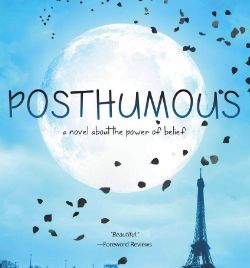



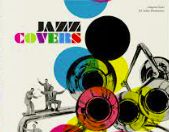









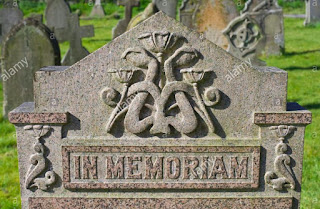




















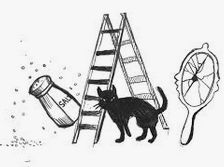





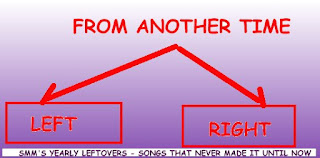











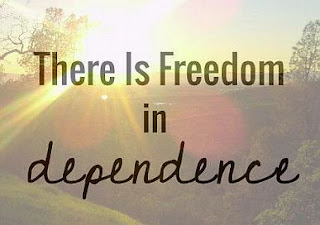















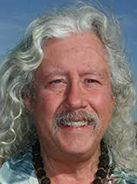











































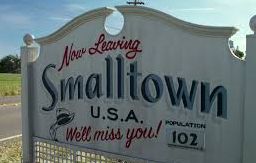






























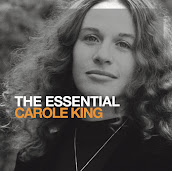

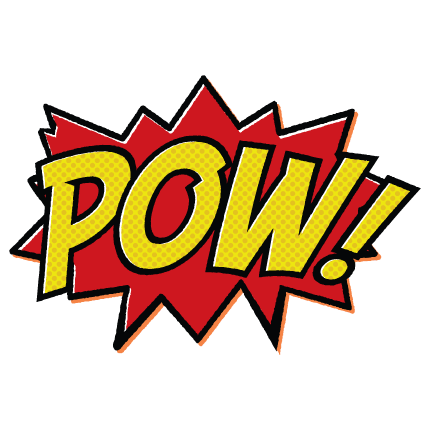






















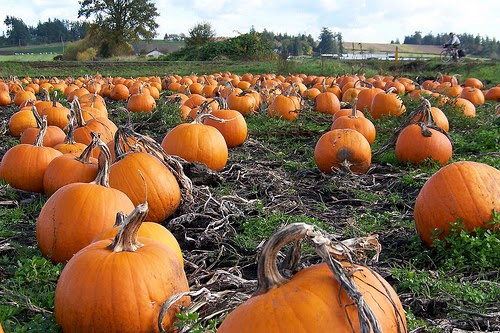


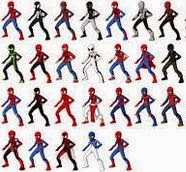
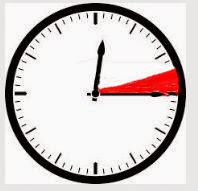

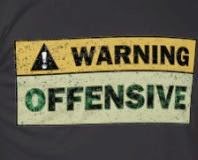


















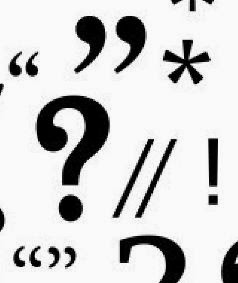



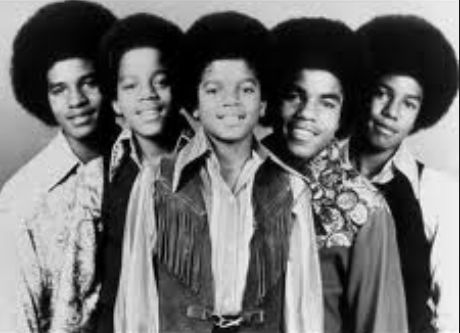
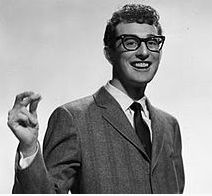



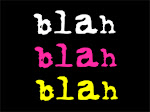
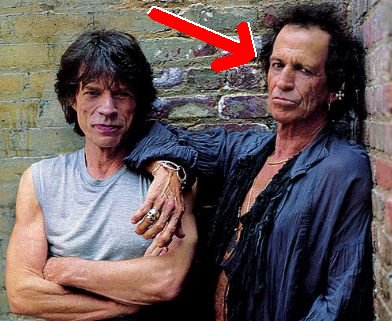










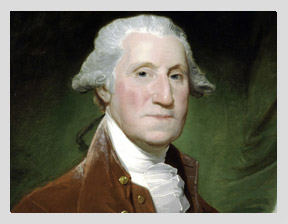




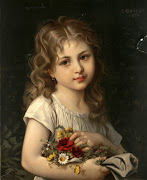



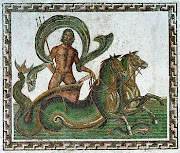




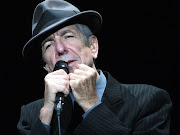
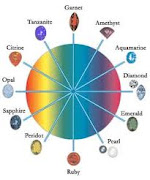
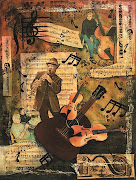



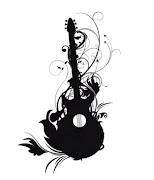
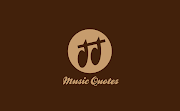




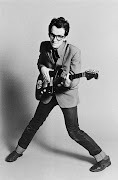



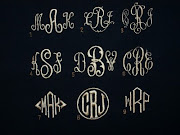





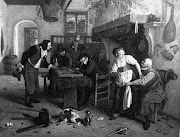
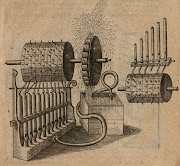

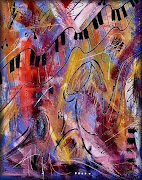
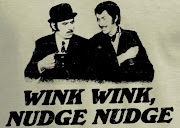

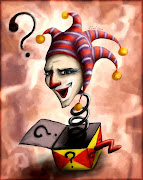

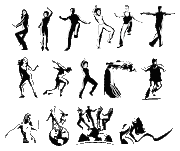

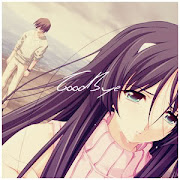







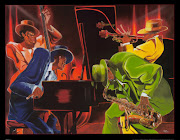



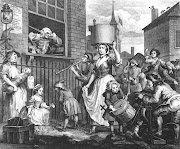





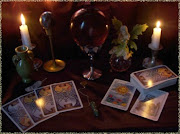




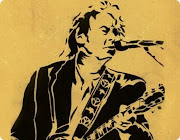

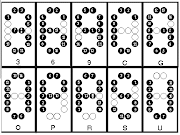
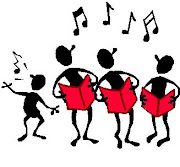



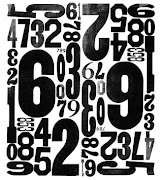



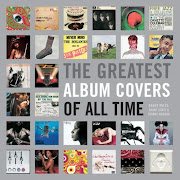


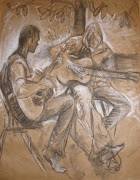
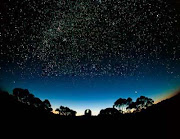
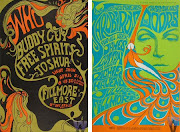



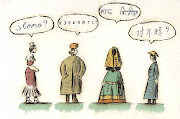
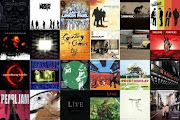


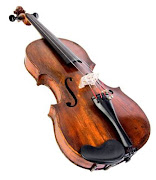


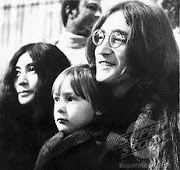
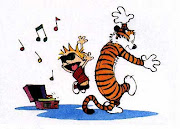



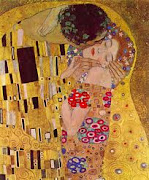


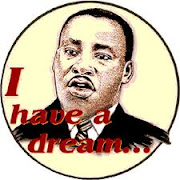

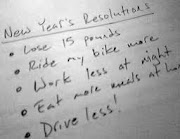
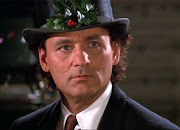


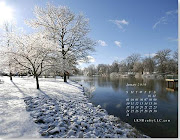


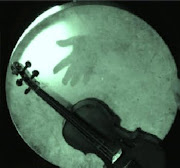

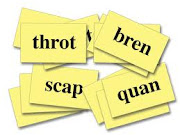
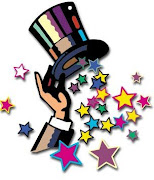

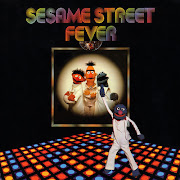



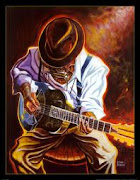

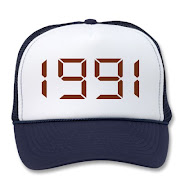


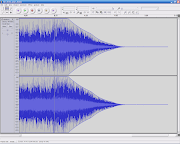





:format(jpeg):mode_rgb():quality(90)/discogs-images/R-1978438-1316184675.jpeg.jpg)

:format(jpeg):mode_rgb():quality(40)/discogs-images/R-5821935-1529323617-8188.jpeg.jpg)